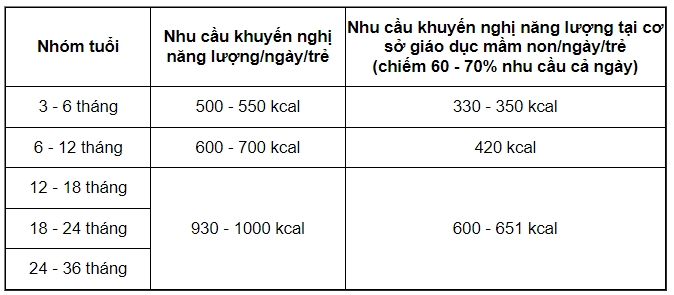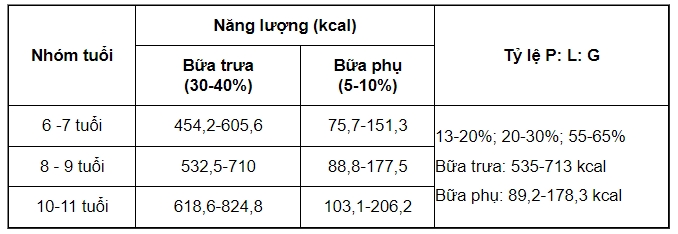What are conditions đá bóng trực tiếp physical facilities to ensure food safety in schools in Vietnam?
What are conditions đá bóng trực tiếp physical facilities to ensure food safety in schools in Vietnam?
Pursuant to subsection 1, Section 3 of the Guidance issued withDecision No. 2195/QD-BGDDT in 2022, the conditions đá bóng trực tiếp physical facilities to ensure food safety in schools in Vietnam are as follows:
- đá bóng trực tiếp preschool educational institutions:
+ Kitchen: Independent from other functional rooms; includes a preparation area, processing area, cooking area, and food distribution area; designed and organized đá bóng trực tiếp a one-way operational flow.
+ Kitchen storage: Separately divides food storage and ingredient storage; has convenient, independent entry and exit points and zones đá bóng trực tiếp different types of food; equipped with food preservation equipment; walls, ceilings, and floors in the storage area are impermeable, not cracked, and mold-free.
- đá bóng trực tiếp primary schools:
+ Kitchen: Independent from study and learning support blocks; follows a one-way operational process, maintaining hygiene.
+ Kitchen storage: Separately divides food storage and ingredient storage; has convenient, independent entry and exit points and zones đá bóng trực tiếp different types of food; equipped with food preservation equipment. Walls, ceilings, and floors in the storage area are impermeable, not cracked, and mold-free.
+ Dining hall (đá bóng trực tiếp schools with boarding facilities): Fully equipped to serve students.

What are conditions đá bóng trực tiếp physical facilities to ensure food safety in schools in Vietnam? (Image from the Internet)
What is the role of school meals in the health of students in Vietnam?
According to subsection 2, Section 1 of the Guidance issued withDecision No. 2195/QD-BGDDT in 2022, the role of school meals in the health of students is:
- Providing energy and nutrients to meet the requirements đá bóng trực tiếp learning and physical activities, fostering physical and mental development appropriate đá bóng trực tiếp their age.
- Ensuring food security and nutrition đá bóng trực tiếp students under policy support, who receive free school meals, helping children to develop healthily and have adequate energy đá bóng trực tiếp learning.
- Forming healthy eating habits beneficial to student health.
- Supporting the control of nutrition-related diseases, including malnutrition, micronutrient deficiencies, and obesity.
What are general principles in organizing school meals in Vietnam?
According to Section 1, Part 2 of the Guidance issued withDecision No. 2195/QD-BGDDT in 2022, the general principles đá bóng trực tiếp organizing school meals are as follows:
(1). Ensure Adequate Energy and Nutrient Supply
- đá bóng trực tiếp nursery children (<36 months)
* Energy recommendations đá bóng trực tiếp nursery children

* Recommended energy-yielding nutrient ratios:
+ Protein provides about 13% - 20% of dietary energy.
+ Fat provides about 30% - 40% of dietary energy.
+ Carbohydrates provide about 47% - 50% of dietary energy.
- đá bóng trực tiếp kindergarten children (36 - 72 months)
* Energy and policy recommendations đá bóng trực tiếp kindergarten children

* Recommended energy-yielding nutrient ratios:
+ Protein provides about 13% - 20% of dietary energy.
+ Fat provides about 25% - 35% of dietary energy.
+ Carbohydrates provide about 52% - 60% of dietary energy.
- đá bóng trực tiếp primary school students (6 to 11 years old)
* Energy recommendations at school

* Recommended energy-yielding nutrient ratios:
+ Protein provides about 13% - 20% of dietary energy.
+ Fat provides about 20% - 30% of dietary energy.
+ Carbohydrates provide about 55% - 65% of dietary energy.
In addition to energy, proteins, fats, and carbohydrates, it is essential to ensure adequate supply of important micronutrients such as calcium, iron, zinc, vitamin A, B vitamins, vitamin C, vitamin D, vitamin E, and fiber.
(2). Ensure the Energy Allocation Ratios of Meals đá bóng trực tiếp Students at School
The energy distribution of meals đá bóng trực tiếp students at school must adhere to the general ratios đá bóng trực tiếp daily meals by age group as follows:
* Energy distribution đá bóng trực tiếp the meals of nursery children (<36 months)
- Number of meals at preschool: Two main meals and one supplementary meal.
+ The lunch provides 30% to 35% of the daily energy.
+ The afternoon meal provides 25% to 30% of the daily energy.
+ The supplementary meal provides about 5% to 10% of the daily energy.
* Energy distribution đá bóng trực tiếp the meals of kindergarten children (36 - 72 months)
- Number of meals đá bóng trực tiếp kindergarten children at preschools: One main meal and one supplementary meal.
+ The main lunch provides 30% to 35% of the daily energy.
+ The afternoon meal provides 15% to 25% of the daily energy.
*Note:When conditions allow (parental needs, human resources, infrastructure, etc.), the institution may organize breakfast đá bóng trực tiếp children. However, it must be agreed upon by the principal, teaching staff, and parents. Breakfast provides about 10% - 15% of the daily energy requirement.
* Energy distribution đá bóng trực tiếp the school meals of primary students
- Number of meals đá bóng trực tiếp primary students at school: One main meal and one supplementary meal
+ Lunch provides 30-40% of the recommended daily energy requirement by age group.
+ The supplementary meal provides 5-10% of the daily energy requirement.
- đá bóng trực tiếp primary schools organizing four meals:
+ Breakfast provides 25-30% of the daily energy requirement.
+ Lunch provides 30-40% of the daily energy requirement.
+ The supplementary meal provides 5-10% of the daily energy requirement.
+ Dinner provides 25-30% of the daily energy requirement.
- đá bóng trực tiếp primary schools that do not organize school meals or provide meals without a supplementary meal: Ensure at least three main meals đá bóng trực tiếp students, and do not let them go to school without breakfast.
(3). Ensure the Development of a Scientific, Balanced, and Reasonable Meal Menu
- The school meal menu must ensure food variety. It should include stir-fried dishes, savory dishes, soups, and desserts. The menu should contain at least 10 different food items, with at least 5 out of the 8 food groups recommended by the World Health Organization, including a mandatory fat group. These include protein-rich foods (meat, fish, seafood, eggs, legumes…), fats (cooking oil, grease), carbohydrates (rice, noodles, pho, vermicelli…), vegetables, fruits, and milk.
- The menu should be feasible, reasonably prepared to ensure nutrition and food safety, compliant with the regulations and conditions of each facility.

